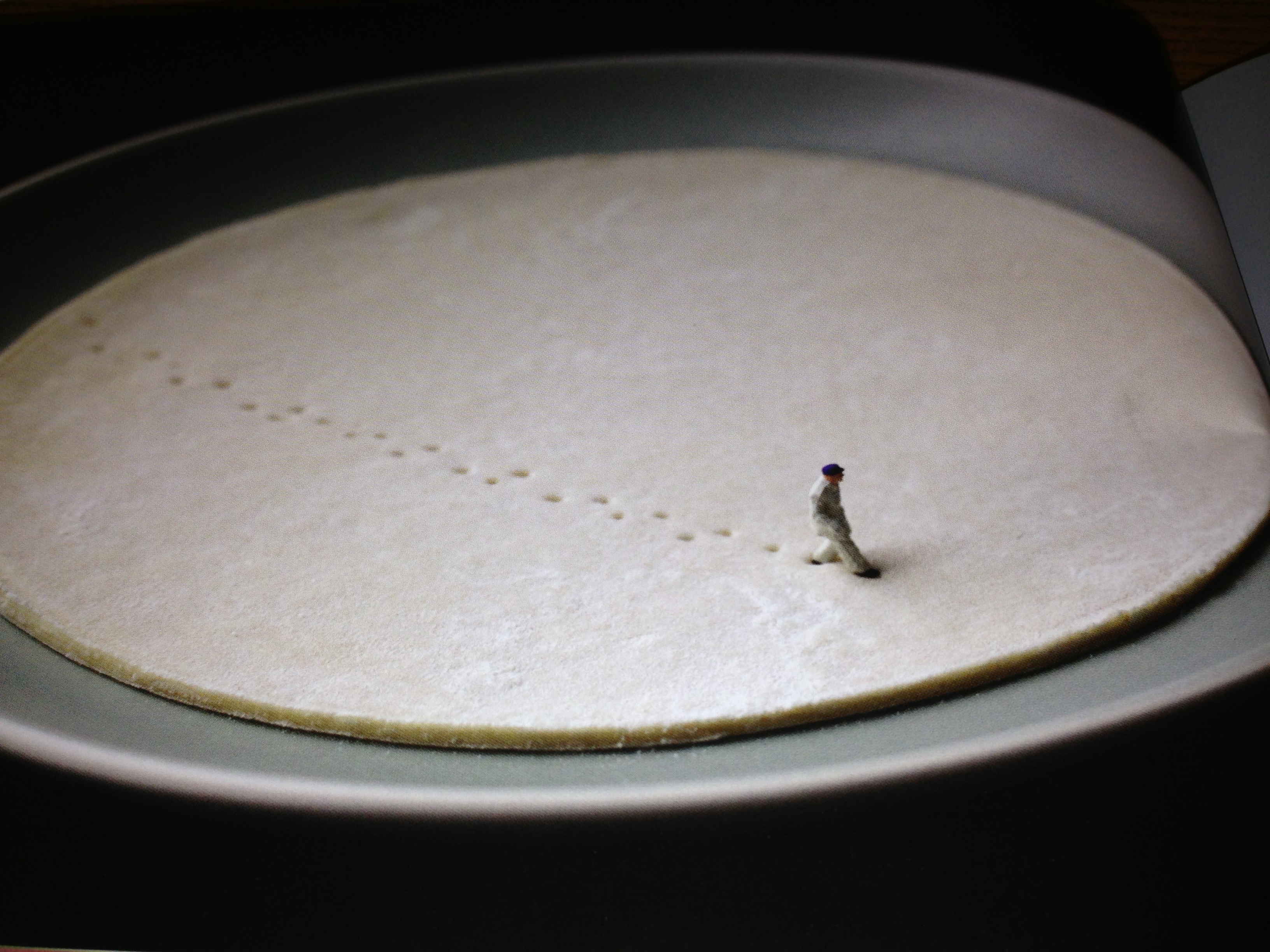Seattle photographer/writer Christopher Boffoli became an overnight sensation in 2011 when some of his photographs, featuring plastic miniature people playing out scenes on larger-than (their)-life foods, went viral. Think Horton Hears a Who for visual perspective.
Now more than 200 of these photographs have been collected in a book out this month titled Big Appetites: Tiny People in a World of Big Food.
Much has been made of the “meaning” of these delightful, yet often dark dioramas – some of it from Boffoli himself who has spoken about the allure of toys and food, two of the most common elements in all cultures, as well as of the dysfunctional relationship we have with food, touching on topics like overconsumption and food spectatorship.
While the photos themselves are stunning, colorful, food-porn gorgeousity, it’s the captions that go with them that give real pause—and indicate that it’s often all a bit more than a lark.
In a picture of giant corn-dogs with a little man standing in deep consideration before three hefty plops of three kinds of mustard Boffoli writes: “As his wife’s interest in sex waned, Graham’s passion for exotic mustards burgeoned.” It’s funny, yet kind of not. Another family-centered shot shows a tiny man atop an heirloom tomato, looking mournfully down: “The small tomatoes always made Bishop wistful about never having children.” In “Cereal Ball Pit,” a mini Mom anxiously holds a baby to her chest and the hand of another child as they perch perilously on the rim of a massive bowl of Cap’n Crunch: “Bev was the textbook definition of a helicopter parent. It was all about fear for her.”
Work life – and more specifically the perils, disparities and drudgery of it – are evident in scenes like “Coffee Crew” in which workers in overalls and yellow hard hats make their way through a “jungle” of coffee beans: “The work had really piled up during the last strike. But at least they had the smell to keep them going.” In “Pomegranate Pickers” workers (again) swing minute jackhammers into boulder-like juicy jewels of pomegranates: “It was a high-paying union job despite the lack of required skills. But you had to know someone just to apply.” More of Boffoli’s miniature proletariats hack at walnut shells: “Once a steady union trade, walnut cracking had suffered due to squirrel outsourcing.”
And then there’s just the overwhelming pathos of humanity, our existential aloneness. It’s these vignettes, in particular, in which the Lilliputian size of the people in disproportionate relation to the food, really seize me. In “Doughy Footsteps,” for instance, one lonely, hunkered down man leaves tiny footprints on a big white plate of dough that resembles a quiet expanse of snow and, accompanied by the caption “Luc was finally learning to be the protagonist in his own life,” brings a near Willy Loman, Death of a Salesman-like despair.
But there’s much fun and sweetness (literally) here as well, depending on your outlook. A father pulling along his boy in a sled atop a creamy cupcake with a big lemon drop comes with the words: “It seemed an opportune time to school little Danny on the pitfalls of eating yellow snow.” In “Swiss Chard Couple” two women look longingly at each other from their respective spots on towering leaves of greens: “Grace and Kat bonded over their mutual love of high places.”
Whether the pages of this book cause you to contemplate, cry or laugh out loud, there’s no denying the cleverness of Boffoli’s conceit. And in an earnestly food-obsessed culture, the notion that we can poke fun at food a bit, while also indulging our fascination with it via the striking, vivid photos, is a pretty novel one.









